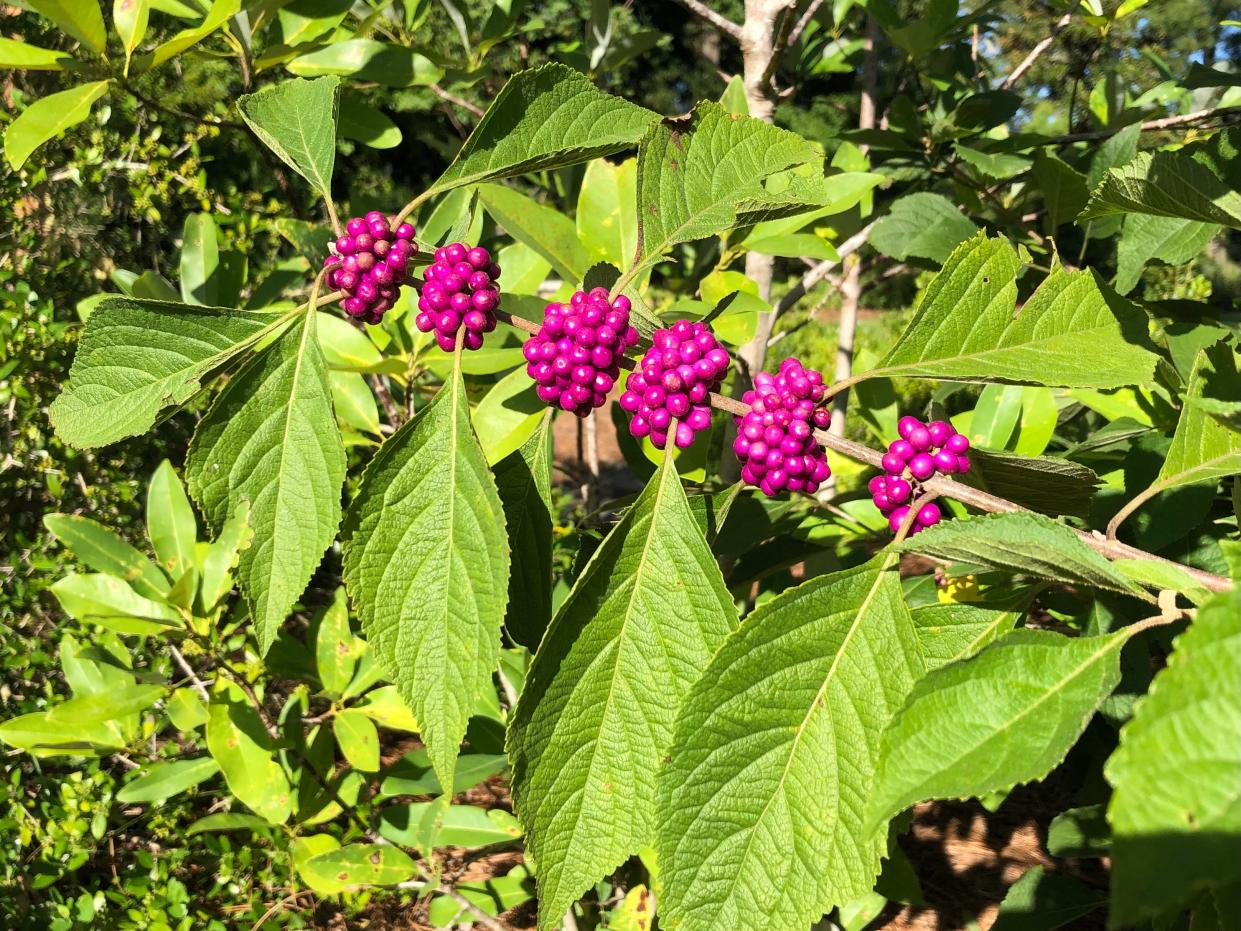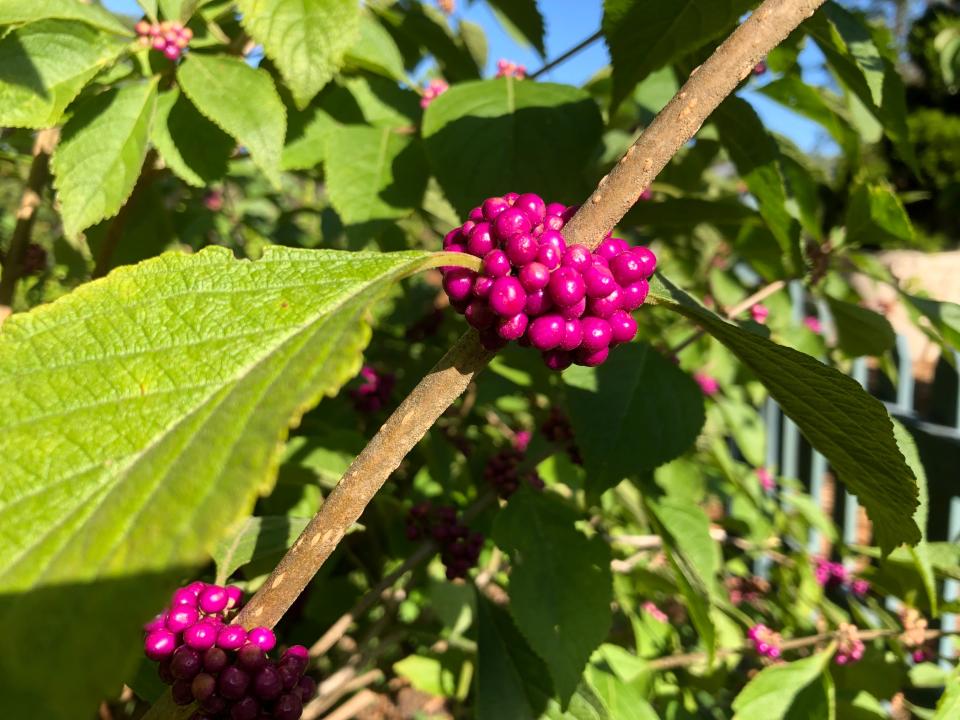From pretty blooms to berries, find your perfect plant at this Wilmington-area festival

American Beautyberry (Callicarpa americana) certainly lives up to its common name during the fall months here in coastal North Carolina.
During the summer, small, fluffy pink flowers grow in clusters along the gracefully arching stems. The inconspicuous blooms provide nectar for a variety of bees and other pollinators, but they are not the star of the show for this woody, native shrub. The blooms are replaced by vivid purple berries starting in August. Against the backdrop of clear blue, fall skies, the stunning magenta fruits provide a bright pop of color in the landscape when many other plants are winding down for the season. In addition to their good looks, these berries provide much needed late season and winter food source for over 40 species of songbirds including American Robins, Mockingbirds, Brown Thrashers, and Purple Finches. The clusters of purple berries are also eaten by a variety of mammals including foxes, racoons, squirrels, and possums.
Native plants like American Beautyberry form the basis of our local ecosystems, creating niches for native wildlife and fostering intricate relationships that have developed over millennia. Like many native plants, American Beautyberry is also well adapted to the sandy soils, drought and frequent storms, and other harsh conditions of coastal, urban yards. Native plants are often better suited to their local environments than non-native counterparts. They require fewer resources, such as water and fertilizers, reducing the strain on ecosystems and contributing to water conservation. Additionally, native plants are less likely to become invasive and disrupt the balance of local ecosystems, a concern that frequently arises with non-native species.
American Beautyberry has also long been known as a folk remedy against mosquitos. The fresh, crushed leaves were once used to keep biting insects away from horses and mules by placing the leaves in the animals’ harnesses. Farmers took to crushing the leaves and rubbing the residue on their skin. Laboratory tests by the USDA’s Agricultural Research Service confirmed what folk wisdom already knew, finding that two compounds within the leaves, callicarpenal and intermedeol, are effective repellants for mosquitos and ticks.

If you are interested in learning more about native plants and how you can add them to your own yard, please join us for the 2023 Cape Fear Native Plant Festival on Saturday, Sept. 16 at the New Hanover County Arboretum and at various vendor sites throughout Pender, New Hanover, and Brunswick counties. The mission of the Native Plant Festival is to educate the public on the benefits and importance of native plants for our local ecosystems, and to promote and support native plant growers to increase demand and supply of native plants in our region.
The festival will feature speakers and exhibitors at the arboretum and plant sales at nurseries around the Cape Fear region. This year, our keynote speaker, Justin Robinson, special projects botanist with the NC Natural Heritage Program, will be delivering the keynote presentation on “A Botanical History of the United States.” For more information and a full list of speakers and plant vendors, visit: https://go.ncsu.edu/2023-nativeplantfestival.

Amy Mead is the area natural resources agent with the NC Cooperative Extension for New Hanover, Brunswick, and Pender counties. She can be reached at afmead@ncsu.edu or 910-798-7660. The arboretum grounds are located at 6206 Oleander Drive, Wilmington and is free and open daily 8 a.m.–5 p.m.
This article originally appeared on Wilmington StarNews: What to know about the Cape Fear Native Plant Festival

